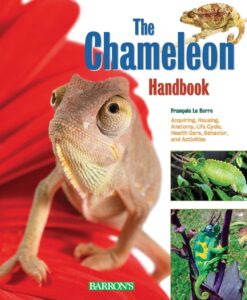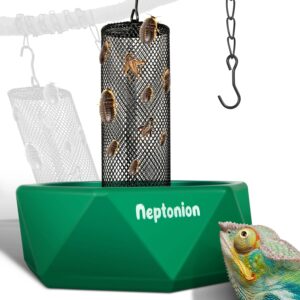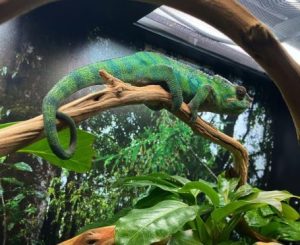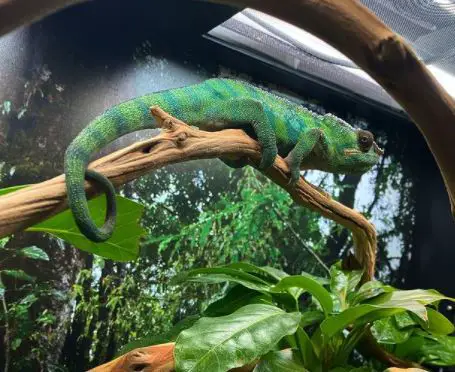How long do chameleons live as pets
How long do chameleons live as pets: Chameleons, with their unique appearance and captivating color-changing abilities, have long been fascinating creatures that intrigue pet enthusiasts worldwide. These extraordinary reptiles are known for their ability to adapt to various environments and blend seamlessly into their surroundings.
As pets, chameleons require specific care and attention to thrive in captivity. One crucial aspect of chameleon care is understanding their lifespan, which can greatly impact the commitment and responsibility required by pet owners.
A Brief Overview of Chameleons as Pets
Chameleons belong to the family Chamaeleonidae and are primarily found in forests, deserts, and other tropical regions across the world. They are characterized by their iconic zygodactyl feet (having two toes pointing forward and two backward), independently rotating eyes that provide exceptional vision range, prehensile tails for better balance, and of course, their ability to change colors. As captivating as they may be in the wild, keeping chameleons as pets requires careful consideration.
While they may not be well-suited for beginners due to their specific needs and delicate nature, experienced reptile keepers often find them incredibly rewarding companions. With patience and dedication towards replicating their natural habitat within an enclosure setting, chameleons can thrive in captivity.
The Importance of Understanding Their Lifespan
 Understanding the lifespan of a pet is essential for any responsible owner. When it comes to chameleons specifically, being aware of how long they typically live helps set realistic expectations regarding commitment levels involved in caring for these delightful creatures.
Understanding the lifespan of a pet is essential for any responsible owner. When it comes to chameleons specifically, being aware of how long they typically live helps set realistic expectations regarding commitment levels involved in caring for these delightful creatures.
By knowing what lies ahead throughout a chameleon’s life cycle, owners can provide appropriate conditions that promote longevity while ensuring optimal physical and mental well-being. Knowing the average lifespan of different chameleon species also aids in making informed decisions when selecting a pet.
Some species, like the Veiled Chameleon (Chamaeleo calyptratus), may have shorter lifespans compared to others, such as Panther Chameleons (Furcifer pardalis). This knowledge allows potential owners to choose a suitable species that aligns with their capabilities, resources, and long-term commitment expectations.
Furthermore, understanding their lifespan provides an opportunity for owners to cherish each moment spent with these marvelous creatures. By recognizing the finite nature of their companionship, it encourages individuals to make the most out of their time together and develop a deeper appreciation for the beauty and complexity of chameleons as pets.
General Lifespan of Chameleons
Chameleons, with their captivating ability to change color and unique physical attributes, have long fascinated pet enthusiasts. However, it is crucial to understand the average lifespan of these fascinating creatures before embarking on the journey of caring for them as pets. The lifespan of chameleons can vary depending on several factors, including species and environmental conditions.
Average lifespan range for different species
When it comes to chameleon species commonly kept as pets, there are notable differences in their average lifespans. The veiled chameleon (Chamaeleo calyptratus), a popular choice among reptile enthusiasts, typically lives for about 5 to 8 years in captivity. With proper care and attention to its specific needs, some veiled chameleons can even live up to 10 years.
On the other hand, the panther chameleon (Furcifer pardalis), known for its stunning coloration variations, has an average lifespan ranging from 5 to 7 years in captivity but can reach up to 10-12 years when provided with optimal care. Another notable species is Jackson’s chameleon (Trioceros jacksonii), which generally lives between 5 and 10 years when properly cared for.
Factors influencing lifespan
The longevity of chameleons is influenced by various factors that are worth considering when providing appropriate care. Genetics play a crucial role in determining the overall lifespan of individual chameleons since certain species have naturally shorter or longer lifespans than others due to their genetic makeup and inherent traits.
Additionally, environmental conditions and habitat setup significantly impact a chameleon’s well-being and longevity. Proper enclosure setup is vital for maintaining optimal health and extending a chameleon’s lifespan.
It includes providing an adequately sized enclosure that allows for both vertical and horizontal movement, along with a suitable temperature gradient and humidity levels. Chameleons also require access to UVB lighting to aid in calcium absorption and prevent metabolic bone disease.
Furthermore, maintaining a stress-free environment with ample hiding spots and minimizing handling can reduce the chances of stress-related health issues that may affect their lifespan. Understanding the general lifespan of chameleons is crucial for any prospective pet owner.
While the average lifespan of chameleons varies among different species, providing a well-designed habitat that meets their specific needs is essential for maximizing their potential longevity. By considering genetics, species-specific traits, and creating an optimal living environment with suitable temperatures, humidity levels, UVB lighting, and stress reduction measures, pet owners can ensure their chameleons live healthy lives that may surpass typical expectations.
Veiled Chameleon (Chamaeleo calyptratus)
Average lifespan: 5-8 years in captivity, up to 10 years with proper care
 How long do chameleons live as pets: Diet plays a crucial role in the longevity of veiled chameleons. These remarkable creatures require a balanced nutrition to thrive.
How long do chameleons live as pets: Diet plays a crucial role in the longevity of veiled chameleons. These remarkable creatures require a balanced nutrition to thrive.
Their primary diet consists of insects such as crickets, mealworms, and roaches. However, it is essential to ensure that these insects are gut-loaded, meaning they have been fed with nutrient-rich foods before being offered to the chameleon.
Additionally, providing vitamin supplementation helps fulfill their nutritional requirements and promotes overall health. The enclosure for veiled chameleons should be carefully designed to optimize their lifespan.
It should be spacious enough for them to move freely and should mimic their natural habitat as much as possible. The enclosure must have a proper temperature gradient that allows the chameleon to regulate its body temperature effectively.
UVB lighting is also crucial for these reptiles as it aids in the synthesis of vitamin D3 and calcium absorption. Maintaining appropriate humidity levels is equally important since low humidity can lead to dehydration while excessive moisture can cause respiratory problems.
Stress reduction techniques significantly impact the lifespan of veiled chameleons as they are sensitive creatures easily susceptible to stress-related illnesses. Providing hiding spots within the enclosure allows them to feel secure and reduces anxiety levels.
Additionally, minimizing handling stress by limiting interaction with humans helps maintain their overall well-being. Regular veterinary check-ups and parasite prevention measures form an integral part of effective health care for veiled chameleons.
Routine examinations enable early detection of any potential health issues and allow prompt treatment if required. Preventive measures such as implementing a parasite control program help ensure that these pets remain healthy throughout their lives.

Panther Chameleon (Furcifer pardalis)
Average lifespan: 5-7 years in captivity, up to 10-12 years with optimal care
Panther chameleons have specific requirements for a prolonged lifespan. Their diet should consist of a variety of gut-loaded insects, fruits, and vegetables to provide the necessary nutrients. By offering a diverse range of prey items and including occasional fruits and vegetables, their dietary needs are met comprehensively.
Creating an enclosure that mimics their natural environment is crucial for the well-being of panther chameleons. The enclosure should be spacious and offer plenty of climbing opportunities as these chameleons are arboreal creatures.
Maintaining suitable temperature and humidity levels within the enclosure is essential for their overall health and longevity. Stress reduction measures significantly impact the lifespan of panther chameleons.
Limiting handling sessions helps minimize stress levels, as these chameleons may become anxious when frequently interacted with. Providing privacy by designing the enclosure with sufficient hiding spots can also help reduce stress.
Health care is vital throughout a panther chameleon’s life to ensure optimal health and longevity. Regular veterinary check-ups help detect any potential health issues at an early stage, allowing prompt intervention if necessary.
To sum up how long do chameleons live as pets
Chameleons can make fascinating pets, but understanding their specific needs and requirements is essential for enabling them to live long and healthy lives. By providing appropriate diets that encompass balanced nutrition along with gut-loaded insects, fruits, vegetables, and vitamin supplementation when needed, pet owners can support their chameleon’s overall well-being. The enclosure plays a crucial role in maintaining optimal conditions for these reptiles.
It should be carefully designed to include proper temperature gradients, UVB lighting for vitamin synthesis, humidity control measures suited to the species’ needs while providing ample space for activity. Reducing stress by incorporating hiding spots within the enclosures and limiting handling sessions ensures a comfortable and anxiety-free environment for chameleons.
Regular veterinary check-ups, along with implementing parasite prevention measures, contribute to their long-term health. By adhering to these guidelines, chameleon owners can enjoy the companionship of their pets for an extended period while fostering a healthy and fulfilling relationship that benefits both parties involved.
Further Reading:


